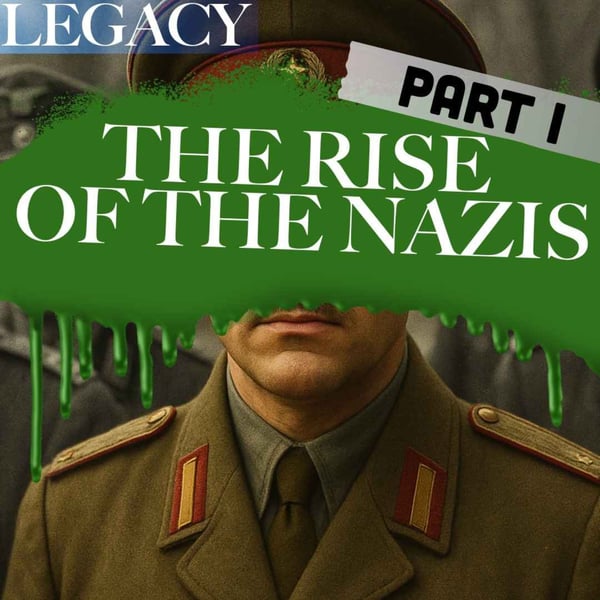Picasso | The Weeping Woman | 3
Legacy
Original Legacy Productions
3.9 • 696 Ratings
🗓️ 24 January 2024
⏱️ 36 minutes
🧾️ Download transcript
Summary
Death is ever more present in Picasso’s work, as horrific events in his home country inspire him to create one of the defining paintings of the 20th century. Meanwhile his own mortality weighs on him as he approaches old age.
Artwork:
Guernica, Pablo Picasso (1937)
The Weeping Woman, Pablo Picasso (1937)
Listen to Legacy on the Wondery App or wherever you get your podcasts. You can binge episodes early and ad-free on Wondery+. Join Wondery+ in the Wondery App, Apple Podcasts or Spotify. Start your free trial by visiting wondery.com/links/legacy now.
See Privacy Policy at https://art19.com/privacy and California Privacy Notice at https://art19.com/privacy#do-not-sell-my-info.
Transcript
Click on a timestamp to play from that location
| 0:00.0 | Welcome back to Legacy for the third part of our series on Picasso, |
| 0:10.6 | undeniably a great artist, but a man with a reputation tarnished by the standards of today. |
| 0:17.6 | We left you last time in the 1930s, and Picasso has achieved fame and fortune, but his |
| 0:22.6 | personal life is getting complicated, to say the least, his wife leaving him after discovering |
| 0:27.8 | an affair with a younger woman, Marie-Terez-Valterre, who Picasso meets when she's just 17. |
| 0:33.6 | This is far from the end of the story of Picasso's complicated personal life, which will |
| 0:38.7 | return to you later, but let's rewind a little as we turn to another subject inextricably |
| 0:43.8 | linked with the Picasso story, the story of war. |
| 0:49.7 | Picasso is still making his way as an artist when the First World War breaks out in 1914. |
| 0:55.0 | Because he's Spanish, he isn't called up. |
| 0:57.7 | But many of his fellow artists in Paris are, including his friend and Cubism collaborator, George Brac. |
| 1:04.1 | I drove him and André de Ré to the station, Cicasseau. |
| 1:07.7 | And I never saw them again. |
| 1:09.1 | This isn't true in the literal sense. |
| 1:10.7 | Both Prach and Dren survived the Great War, but Brac is badly wounded, and their personal |
| 1:15.8 | connection is never the same again. |
| 1:18.3 | The war effectively pauses the Cubism movement, and, after the armistice, many of the artists |
| 1:24.1 | involved, including Picasso, changed style in a movement called Return to Order. |
| 1:29.2 | The works are calmer, more realistic, and less avant-garde. |
| 1:34.1 | As we've already heard, post-war, Picasso's career goes from strength to strength. |
| 1:39.6 | But two decades later, conflict is about to have a huge impact on Picasso's work. |
| 1:45.1 | He may have been living in Paris since the turn of the century, |
... |
Please login to see the full transcript.
Disclaimer: The podcast and artwork embedded on this page are from Original Legacy Productions, and are the property of its owner and not affiliated with or endorsed by Tapesearch.
Generated transcripts are the property of Original Legacy Productions and are distributed freely under the Fair Use doctrine. Transcripts generated by Tapesearch are not guaranteed to be accurate.
Copyright © Tapesearch 2025.

